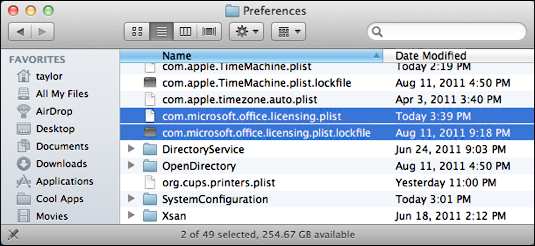

- HOW TO UNINSTALL MICROSOFT OFFICE 2011 HOW TO
- HOW TO UNINSTALL MICROSOFT OFFICE 2011 INSTALL
- HOW TO UNINSTALL MICROSOFT OFFICE 2011 SOFTWARE
- HOW TO UNINSTALL MICROSOFT OFFICE 2011 PC
HOW TO UNINSTALL MICROSOFT OFFICE 2011 HOW TO
Fortunately, you don’t have to unravel their confusing instructions, I can show you how to do it instead. I figured out how to remove it thanks to a somewhat confusing Microsoft Tech Note ingeniously titled How to Completely Remove Office for Mac.
HOW TO UNINSTALL MICROSOFT OFFICE 2011 INSTALL
Still, an application like Microsoft Office does install a lot of stuff in a staggering number of different locations on your computer.
HOW TO UNINSTALL MICROSOFT OFFICE 2011 PC
On the Mac, at least, it’s not quite as bad, muchly because Apple doesn’t have the cursed registry file that is the bane of all Windows and PC administrators. You want to really see the bleeding edge of this, go do a search for “remove norton antivirus” and read about the years of frustration people have had with that particular Byzantine removal process. Whether you’re on a Mac or PC, complicated applications can be so deeply embedded in your computer and operating system that it can be well-nigh impossible to fully and completely remove it.
HOW TO UNINSTALL MICROSOFT OFFICE 2011 SOFTWARE
You can also go to Manage storage on the OneDrive website.Welcome to the sticky world of big software installation on your computer. To see how much storage is available, and add more storage, swipe in from the right edge of the screen (or, if you're using a mouse, point to the lower-right corner of the screen), select Settings, select Change PC settings, and then select OneDrive.

You can save files to OneDrive and work with them in several different ways: on the website ( ), with the app for Windows 8.1 and Windows RT 8.1, with the desktop apps for a PC or Mac, and with apps for your mobile devices.

Windows comes with the OneDrive app, which helps you get to your free OneDrive storage in the cloud, sometimes referred to as online storage. Here's how: When you insert a blank disc into the PC, choose Like a USB flash drive from the list of options.Ĭloud storage using OneDrive. If your PC has a CD, DVD, or Blu-ray Disc drive that can read and write to a blank disc, you can use the drive to store data, much like an SD or USB flash drive. Check with your PC manufacturer to understand which USB ports your PC supports.ĭVDs and CDs. While you can use a USB 2.0 flash drive in a USB 3.0 port (at USB transfer speeds), you can't use a USB 3.0 flash drive with a USB 2.0 port. Some newer PCs include a USB 3.0 port, which includes faster transfer speeds of up to 10 times USB 2.0. Most PCs include one or more USB ports that you can plug a USB flash or external drives into. On Surface Pro, the card reader is located on the right edge, above the power connection. On Surface RT, the microSD card reader is located under the kickstand on the right side. Tip: If you're using Surface, you can add up to 64 GB of storage with a microSD card. If you need to free more space (the drive is still marked red), go to the next tip. Go back to Computer in File Explorer, select the drive you cleaned up, and then select Refresh. In the message that appears, select Delete files. To remove data from a previous installation of Windows, select the Previous Windows installation(s) check box. In the Disk Cleanup dialog box, on the Disk Cleanup tab, select the check boxes for the file types that you want to delete, and then select OK. In the Disk Cleanup dialog box in the Description section, select Clean up system files. If prompted, select the drive that you want to clean up, and then select OK. In the search box, type Disk Cleanup, and then, in the list of results, select Disk Cleanup. Open Disk Cleanup by clicking the Start button. One of the easiest ways to clean up files you no longer need is by using Disk Cleanup. Cleaning out your PC on a regular basis frees up drive space and helps it run better.


 0 kommentar(er)
0 kommentar(er)
